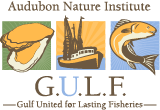Code of Conduct for Responsible Fisheries
In 1995, the Food and Agriculture Organization of the United Nations (FAO) created the Code of Conduct for Responsible Fisheries (CCRF) as a best-practices guideline for fisheries management around the world. The goal of the Code was to provide a path toward “responsible, sustained fisheries” in a world facing the challenge of an increasing human population and the need for stable sources of protein.
The CCRF is not a certification scheme or an ecolabel, it is a set of principles that provide the backbone of existing sustainability certification schemes.
The Code is made up of articles that address the following areas:
• Implementing, monitoring and updating
• Fisheries management
• Fishing operations
• Integration of fisheries into coastal area management
• Post-harvest practices and trade
• Fisheries research
Download the Code of Conduct for Responsible Fisheries 1995
Ecolabelling Guidelines
Due to the increasing use of CCRF by private certification schemes, the FAO developed the Ecolabelling Guidelines to provide minimum substantive criteria to support its use.
Caddy Checklist
“A Checklist for Fisheries Resource Management Issues Seen From the Perspective of the FAO Code of Conduct for Responsible Fisheries” known as the “Caddy Checklist, ” is an operationalized version of the CCRF. The Caddy Checklist focuses on the sustainability of management measures by addressing five key areas of the fishery: fisheries management, fishing operations, integration of fisheries into coastal area management, post-harvest practices and trade, and fisheries research. By taking clauses of the CCRF and transforming statements into questions, it is possible to quantify and score the system used to manage the fishery, measuring the robustness of management and sustainability. By taking clauses of the CCRF and transforming statements into questions, it is possible to quantify and score the system used to manage the fishery, to measure the robustness of management and sustainability. The Caddy Checklist has been used for sustainability benchmarking in G.U.L.F.’s Marine Advancement Plans.
Download the The FAO Fisheries Circular No. 917 , October 1996, “Caddy Checklist”



